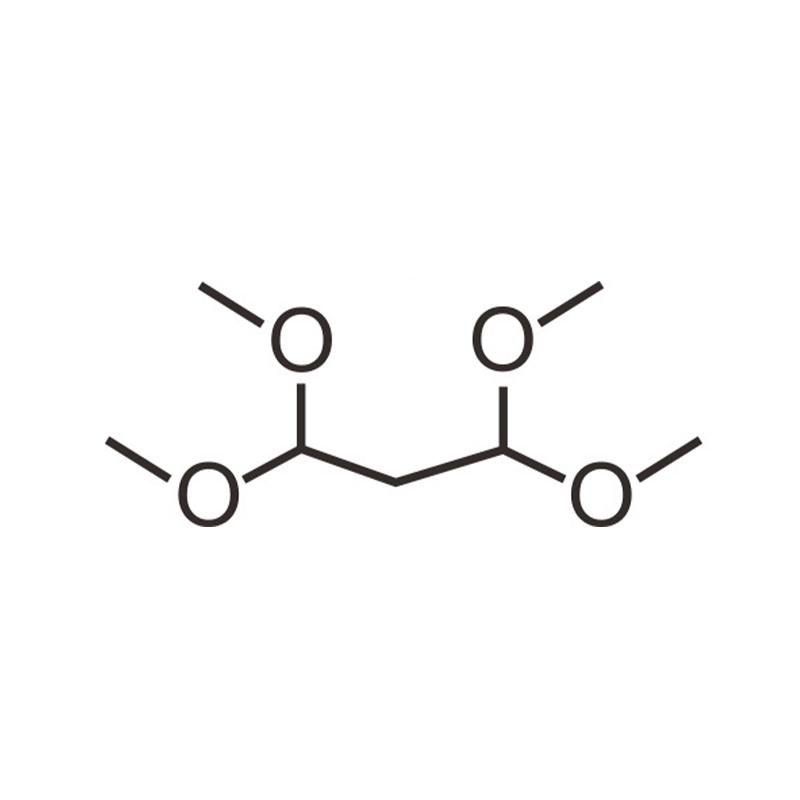Tel:+86-7103723830
Email:biz.hb@jhchemical.com
FAX:
FACTORY:No. 32, Tianshun Avenue, Xiangcheng Economic Development Zone, Xiangyang City, Hubei Province,China
Production Manager:Laura Lau
Tel:+86 19571296744
Sales Manager:Tiffany Yang
Tel:+86-13871702573

Product Details
102-52-3 | 1,1,3,3-Tetramethoxypropane |
Jinghong Code: | JH026 |
Synonyms: | Malonaldehyde bis(dimethyl acetal)/Malonaldehyde tetramethyl acetal/TMOP |
CAS No.: | 102-52-3 |
EINECS No.: | 203-037-2 |
Molecular formula: | C7H16O4 |
Appearance: | colorless transparent liquid |
Packing: | 200kg/HDPE drum |
UN number: 3272 | PG: III Hazard class: 3 |
HS code: | 2909199090 |
1,1,3,3-Tetramethoxypropane is a highly valuable organic intermediate that finds extensive applications in various industries. With its unique chemical properties and versatility, this compound serves as a crucial building block for the synthesis of numerous complex organic molecules.
One of the key advantages of 1,1,3,3-tetramethoxypropane is its exceptional stability, making it an ideal choice for use in a wide range of reactions. Its four methoxy groups provide excellent protection for reactive functional groups, ensuring the desired transformations occur smoothly and efficiently.
Furthermore, 1,1,3,3-tetramethoxypropane acts as an efficient methoxylating agent, allowing for the introduction of methoxy groups into organic molecules. This capability opens up new possibilities for the synthesis of novel compounds in medicinal chemistry, agrochemicals, and materials science.
In the pharmaceutical industry, 1,1,3,3-tetramethoxypropane plays a crucial role in the synthesis of various drugs and pharmaceutical intermediates. Its use as a protecting group during organic synthesis helps to control and direct reactions, leading to higher yields and improved purity of the desired products.
In the field of agrochemicals, this compound serves as a key component for the production of pesticides, herbicides, and fungicides. Its stability and reactivity make it an excellent choice for introducing specific functional groups into these compounds, enhancing their effectiveness and selectivity.
Moreover, 1,1,3,3-tetramethoxypropane finds applications in the development of advanced materials, including polymers, resins, and specialty chemicals. Its ability to modify the chemical structure of these materials allows for the creation of tailored properties such as improved durability, enhanced adhesion, and increased flexibility.
In conclusion, 1,1,3,3-tetramethoxypropane stands as a versatile organic intermediate with immense potential in various industries. Its stability, reactivity, and methoxylating capabilities make it an indispensable tool for organic chemists and researchers. Whether it is for pharmaceutical synthesis, agrochemical development, or advanced materials, this compound offers endless possibilities for innovation and advancement.
product packaging
